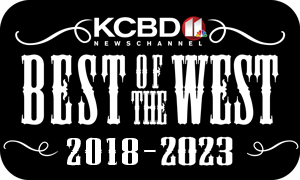On Wednesday, June 3rd, the Senate unanimously approved H.R. 7010, which altered many terms of the PPP Loan forgiveness application and rules.
You’ll have longer to repay any loan proceeds that are not forgiven
After passage of the CARES Act, the SBA assigned a 2-year maturity date to the portion of any PPP loan that was not forgiven. H.R. 7010 extends this period to five years. While technically, this prolonged repayment period applies only to PPP loans made AFTER passage of the bill, lenders and borrowers are free to renegotiate the terms of any existing PPP loan to match the permitted 5-year period.
In addition, while the CARES Act required lenders to defer the payment of principal and interest for six months, H.R. 7010 allows for deferral until the date the lender receives the forgiveness amount from the SBA, which in most cases will be significantly longer.
Forgiveness is much easier to come by
This is what business were clamoring for. H.R. 7010 will greatly increase the likelihood that a large percentage of a borrower’s PPP loan will be forgiven. It does so in four ways.
1 Extension of covered period
First, as we mentioned above, the CARES Act granted borrowers eight weeks from the moment they received the PPP proceeds to incur costs eligible for forgiveness. H.R. 7010, however, extends that “covered period” to 24 weeks from the date of the loan’s origination, or December 31, 2020, whichever comes earlier.
This move was critical because while the CARES Act was built on the hope that most businesses would be up and running by now, the reality is that many bars, restaurants, hotels and other businesses are nearing the end of their initial 8-week covered period only to remain partially or fully suspended by state or local order. More time to incur forgivable costs is essential, and Congress has supplied just that.
Of course, limits remain. The maximum amount paid to any one employee that will be forgiven is capped at an annualized salary of $100,000; as a result, for a 24-week covered period, this limit will be reached once an employee receives $46,153 in cash compensation. H.R. 7010 does not make that clear, but here’s to hoping that soon-to-be-released guidance does.
2 You can spend more of your proceeds on non-payroll costs, but BE CAREFUL
The expanded covered period pulls FOUR MONTHS of additional mortgage interest, rent and utility costs into the forgiveness fold, a move that, in isolation, would have been of limited usefulness given that the SBA limits the portion of a borrower’s forgivable expenses attributable to these types of non-payroll costs to 25% of the total.
Fortunately, H.R. 7010 remedies this problem as well, though not without a potentially terrifying trap for the unwary. The new bill provides that the 25% cap for non-payroll costs is raised to 40%, which is great news for borrowers.
But here’s what’s really, really, bad: the bill states that “to receive loan forgiveness under this section, an eligible recipient shall use at least 60 percent of the covered loan amount for payroll costs….”
That language is…uncomfortable. Sure, the SBA capped forgiveness attributable to non-payroll costs at 25%, but the SBA doesn’t care how much of the borrowed proceeds you spend. If you borrowed $100,000 and spent $50,000 on payroll costs and $30,000 on non-payroll costs, your total forgivable costs would be limited to $66,667 ($50,000/75%), but you’d still get that $66,667 of forgiveness.
To the contrary, H.R. 7010 appears to create a cliff: if a borrower fails to spend 60% of the loan proceeds on payroll costs, NONE of the loan will be forgivable. In the example above, because only $50,000 of the proceeds (50%) were spent on payroll costs, NONE of the loan would be forgiven. In effect, borrowers are trading a longer covered period for the requirement that 60% of the proceeds be spent during that time to maintain payroll.
It should be noted that Senator Marco Rubio, among others, are not comfortable with this cliff effect, and have asked the SBA to address the issue favorably in regulations. I’m not sure what type of wiggle room they’ll have given the statutory language, but when you consider that the SBA pretty much took a blowtorch to the legislative text of the CARES Act, I guess anything is possible.
3 You’ll have longer to replace FTEs/restore salaries
As we’ve previously discussed at great length here, a borrower can spend every last penny of its PPP loan on payroll costs, and still will not have the entire loan forgiven if either:
- The borrower lost full-time equivalent employees (FTEs) during the covered period relative to one of several base periods, or
- The borrower significantly reduced the average annual salary or hourly wage of certain employees during the covered period relative to the first quarter of 2020.
In either scenario, however, the borrower could restore any reduction in the forgiveness amount if it either fully restored FTEs or salary/hourly wage to their February 15th, 2020 levels before June 30, 2020. The problem, of course, is as discussed above, many businesses are nowhere close to being fully staffed, and likely won’t be before June 30th.
H.R. 7010 solves this issue by extending the June 30th deadline to December 31, 2020. Thus, as long as the FTEs or salary/hourly wage are restored to February 15th levels any time prior to the end of 2020, no reduction in forgiveness will be required.
4 Businesses that remain partially or fully closed through the end of the year will get new relief
Finally, H.R. 7010 offers a new way out for borrowers who lose FTEs. The bill provides that during the period beginning on February 15, 2020, and ending on December 31, 2020, the amount of loan forgiveness will NOT be reduced when a borrower experiences a loss of FTEs if the borrower, in good faith, is able to document any of the below:
- There was an inability to rehire individuals who were employees of the eligible recipient on February 15th,
- There was an inability to hire similarly qualified employees for unfilled positions on or before December 31, 2020, or,
- There was an inability to return to the same level of business activity as such business was operating at before February 15th due to compliance with requirements established or guidance issued by the Secretary of Health and Human Services, the Director of the Centers for Disease Control and Prevention, or the Occupational Safety and Health Administration during the period beginning on March 21 1, 2020, and ending December 31, 2020, related to the maintenance of standards for sanitation, social distancing, or any other worker or customer safety requirement related to COVID– 19. This is the BIG ONE. It basically provides that if the world is such that on December 31st, restaurants and bars, for example, are unable to fully open due to government orders, any loss in FTEs resulting from such restrictions should NOT be taken into account in computing a required reduction in the forgivable amount.
The 8-week covered period remains an option
H.R. 7010 does not require all borrowers to adopt a 24-week covered period. To the contrary, any business that borrowed its PPP loan prior to the date the bill is signed into law can elect to use the 8-week period beginning on the date it received the funds. This will appeal to those businesses who have spent all of their proceeds and qualify for full forgiveness and who do not wish to wait until the end of the year to apply.
You can now defer certain payroll taxes even if you received a PPP loan
The CARES Act wasn’t ONLY about PPP loans, you know. An additional incentive allowed employers to defer the employer’s 6.2% share of 2020 Social Security tax until the end of 2021 (50%) and 2022 (50%). This deferral was only available, however, to a borrower of a PPP loan until the moment the loan is forgiven.
H.R. 7010 allows an employer to double dip; a borrower of a PPP loan may now also defer all of its 2020 Social Security tax burden into 2021 and 2022, even if the PPP loan is forgiven prior to December 31, 2020.
There are still outstanding questions, and the SBA is supposed to be releasing more information, but overall we see this as great news for any one that received a PPP loan.





